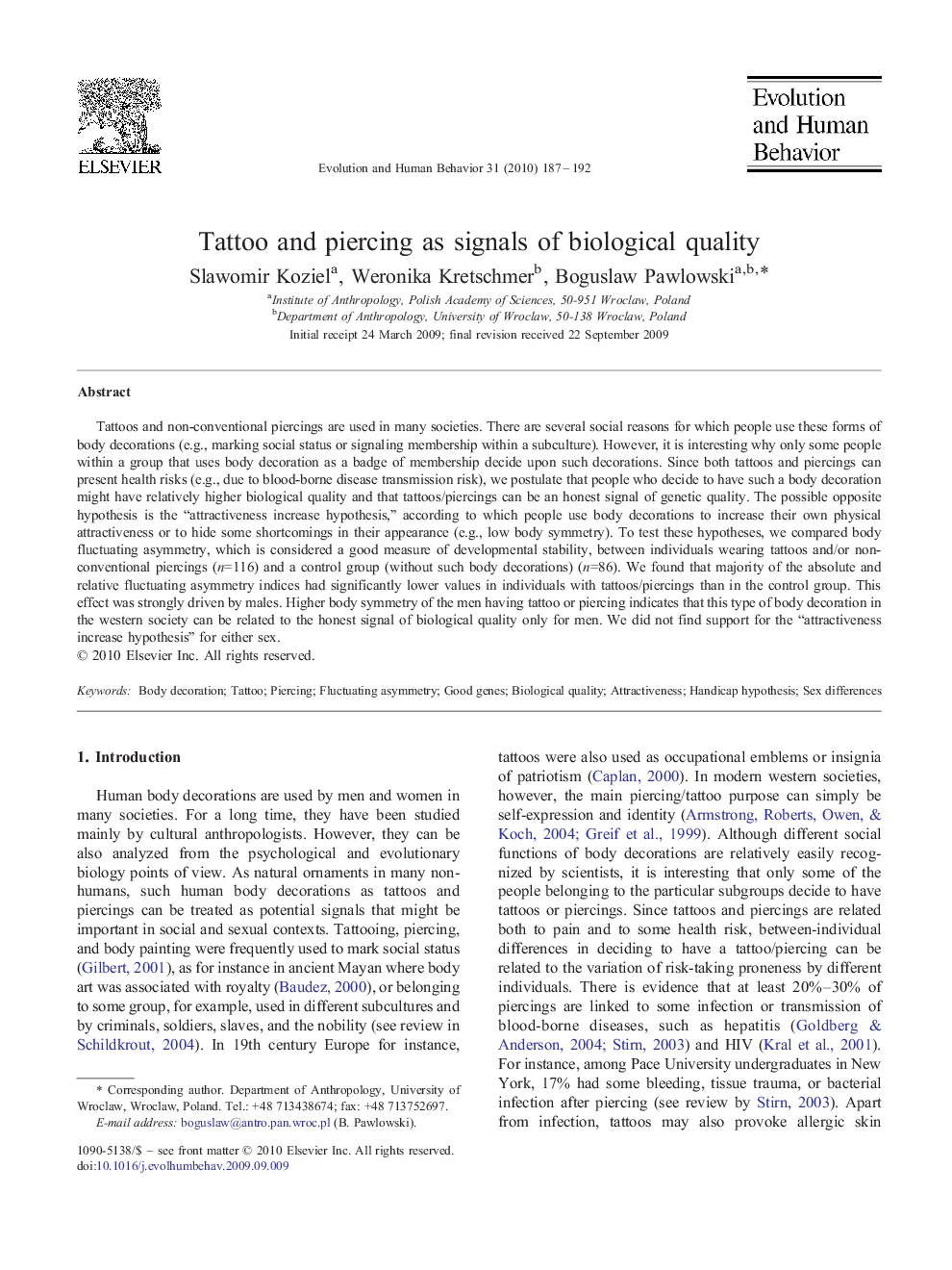| کد مقاله | کد نشریه | سال انتشار | مقاله انگلیسی | نسخه تمام متن |
|---|---|---|---|---|
| 943308 | 925453 | 2010 | 6 صفحه PDF | دانلود رایگان |

Tattoos and non-conventional piercings are used in many societies. There are several social reasons for which people use these forms of body decorations (e.g., marking social status or signaling membership within a subculture). However, it is interesting why only some people within a group that uses body decoration as a badge of membership decide upon such decorations. Since both tattoos and piercings can present health risks (e.g., due to blood-borne disease transmission risk), we postulate that people who decide to have such a body decoration might have relatively higher biological quality and that tattoos/piercings can be an honest signal of genetic quality. The possible opposite hypothesis is the “attractiveness increase hypothesis,” according to which people use body decorations to increase their own physical attractiveness or to hide some shortcomings in their appearance (e.g., low body symmetry). To test these hypotheses, we compared body fluctuating asymmetry, which is considered a good measure of developmental stability, between individuals wearing tattoos and/or non-conventional piercings (n=116) and a control group (without such body decorations) (n=86). We found that majority of the absolute and relative fluctuating asymmetry indices had significantly lower values in individuals with tattoos/piercings than in the control group. This effect was strongly driven by males. Higher body symmetry of the men having tattoo or piercing indicates that this type of body decoration in the western society can be related to the honest signal of biological quality only for men. We did not find support for the “attractiveness increase hypothesis” for either sex.
Journal: Evolution and Human Behavior - Volume 31, Issue 3, May 2010, Pages 187–192